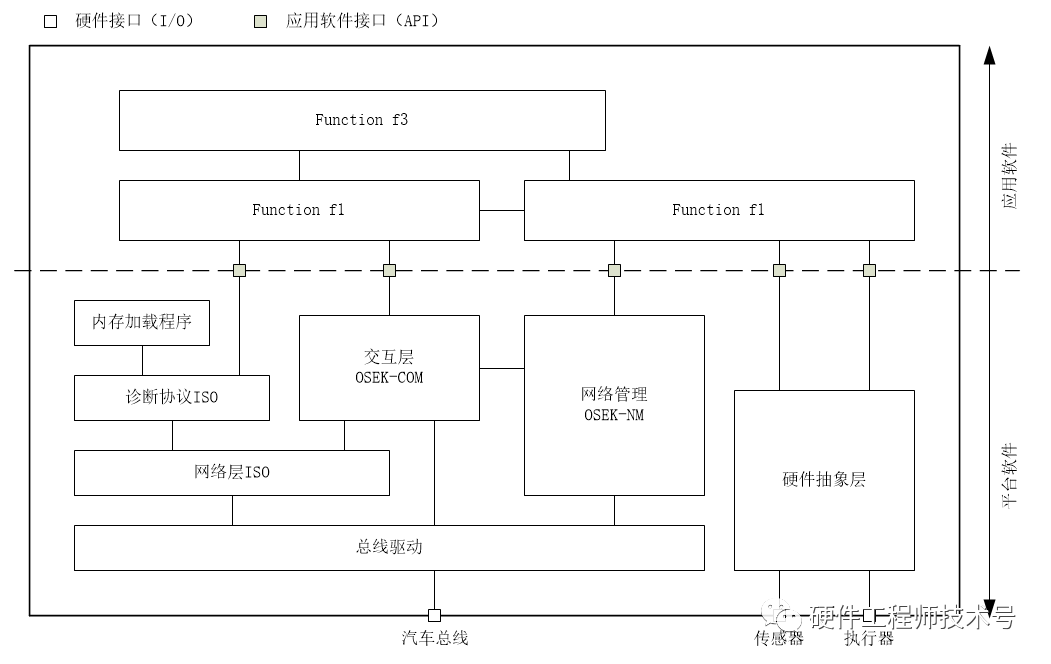01 What is ECU
ECU (Electronic Control Unit) represents the electronic control unit. A single vehicle can have multiple ECUs, including BCM (Body Control Module), EMS (Engine Management System), ABS (Antilock Brake System), BMS (Battery Management System), and other ECUs related to specific subsystems within the vehicle.
02 Software Architecture of ECU
Automotive software consists of many programs. In principle, automotive software is divided into application software and hardware-related platform software. The software architecture allows observation of different aspects of the software, which are referred to as views of the architecture. The static view describes the allocation of functions, signals, and resources at different levels.

▲ Main components of the static software architecture of microcontrollers and standard software components
In contrast, the functional view describes the changes in signals through different functions; the dynamic view (i.e., time-based view) focuses on the temporal characteristics of different parts of the program. To ensure continuous development of individual components and interaction between components, it is necessary to establish some relevant standards in advance.
03 Software Architecture of ECU
Automotive software can be divided into different modules. Larger modules, such as automotive power control, transmission control, and engine control, can be further subdivided into air systems, speed control, fuel systems, and diagnostics. This can continue to be subdivided until the evaluation of a sensor’s signal or fuel injection amount calculation.
Typically, a completely new large system is not developed; instead, as many already developed and tested software components are reused as possible.
Software that is not closely related to specific vehicles (e.g., evaluation of sensor signals) can be used across various vehicles. Dedicated automotive software needs to be developed for a specific manufacturer, a vehicle model series, or a particular model.
-END-